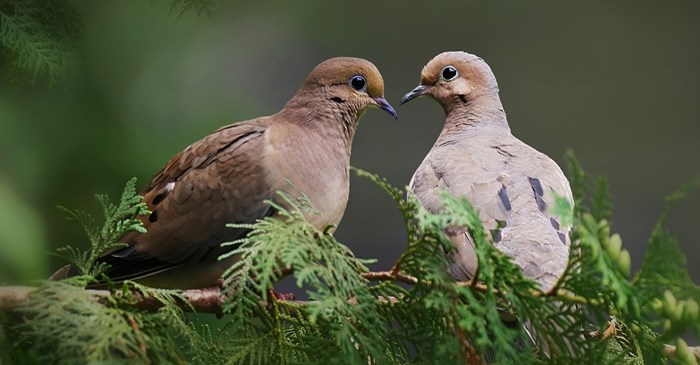Just about anywhere in the continental U.S., you can hear the deep-throated coos of the male Mourning Dove. Or you may hear the distinct whistling sound their wings make with they take off in flight. Wherever you hear these sounds, chances are you are in a relatively open area, such as fields near the edge of a forest, or even a desert. In a residential area, they can often be seen perched on overhead wires, calmly looking down on creation, not calling attention to themselves. About the only place they don’t live is deep in the woods.
Male and female Mourning Doves are similar in appearance with feathers in very muted shades of brown and light grey. When they pair off, you may see them perched together, preening one another and bobbing their heads in unison. They build loosely woven nests of grass, twigs and pine needles, sometimes re-purposing old nests, whether it was theirs to begin with or that of some other species. Since they are not fearful of humans, they will nest just about anywhere, even the ground. The pine tree, however, seems to be one of their favorite spots. Typically, the female lays two eggs at a time. Eggs take about two weeks to hatch and the babies grow up quickly, ready to fledge in just two weeks. In warmer climates, a pair of Mourning Doves can raise five or even six broods in a year.
Mourning Doves eat seeds almost exclusively. They are ground feeders and are likely too large and clumsy for your feeder perches. If they show up at your feeder, you will most likely see them pecking around in the area beneath the feeder, quickly scooping up the seeds that have fallen there. When feeding, they will gather and store food in a large opening in the esophagus called the crop. Once they have gathered up their fill, they will fly away to a safe spot to digest their meal. If you love Mourning Doves, choose Lyric Supreme Mix for your feeder. This all natural premium blend has many of the seeds Mourning Doves love such as sunflower, cracked corn, millet and safflower.
